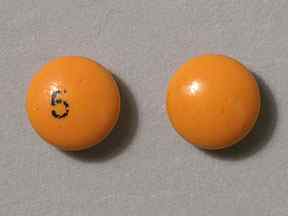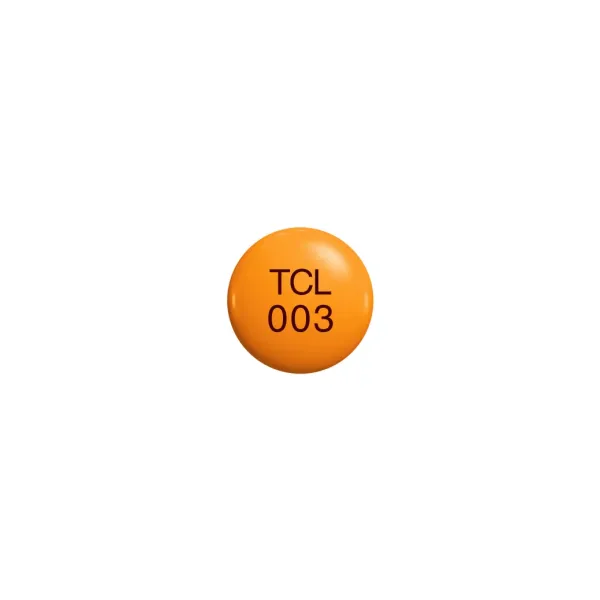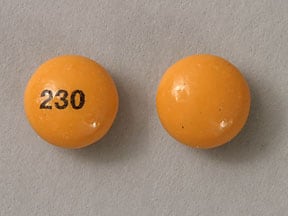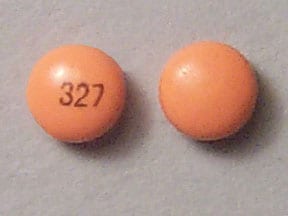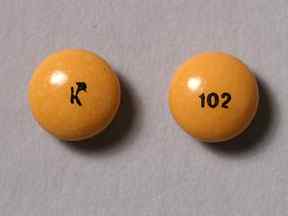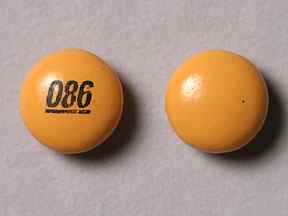Dosage Forms
Excipient information presented when available (limited, particularly for generics); consult specific product labeling. [DSC] = Discontinued product
Enema, Rectal:
Fleet Bisacodyl: 10 mg/30 mL (37 mL)
Suppository, Rectal:
Bisac-Evac: 10 mg (1 ea [DSC], 8 ea [DSC], 12 ea [DSC], 50 ea [DSC], 100 ea [DSC], 500 ea [DSC], 1000 ea [DSC])
Biscolax: 10 mg (12 ea [DSC], 100 ea)
Dulcolax: 10 mg (4 ea, 8 ea, 16 ea, 28 ea, 50 ea)
The Magic Bullet: 10 mg (10 ea, 100 ea)
Generic: 10 mg (12 ea, 50 ea, 100 ea)
Tablet Delayed Release, Oral:
Bisacodyl EC: 5 mg
Bisacodyl EC: 5 mg [contains corn starch, fd&c yellow #10 aluminum lake, fd&c yellow #6 aluminum lake]
Bisacodyl EC: 5 mg [contains corn starch, fd&c yellow #10 aluminum lake, fd&c yellow #6 aluminum lake, methylparaben, propylparaben]
Bisacodyl EC: 5 mg [contains corn starch, fd&c yellow #10 aluminum lake, fd&c yellow #6 aluminum lake, methylparaben, propylparaben, sodium benzoate]
Bisacodyl EC: 5 mg [contains fd&c yellow #10 aluminum lake, fd&c yellow #6 aluminum lake]
Bisacodyl EC: 5 mg [contains fd&c yellow #10 aluminum lake, fd&c yellow #6 aluminum lake, methylparaben, propylparaben, sodium benzoate]
Correct: 5 mg
Ducodyl: 5 mg
Dulcolax: 5 mg [contains fd&c yellow #10 (quinoline yellow), methylparaben, propylparaben, sodium benzoate]
Ex-Lax Ultra: 5 mg [contains fd&c yellow #6 (sunset yellow), methylparaben]
Fleet Laxative: 5 mg [DSC]
GoodSense Bisacodyl EC: 5 mg [contains corn starch, fd&c yellow #10 aluminum lake, fd&c yellow #6 aluminum lake]
GoodSense Womens Laxative: 5 mg [gluten free; contains corn starch]
Womens Laxative: 5 mg [contains fd&c blue #1 aluminum lake, sodium benzoate, tartrazine (fd&c yellow #5)]
Pharmacology
Mechanism of Action
Stimulates peristalsis by directly irritating the smooth muscle of the intestine, possibly the colonic intramural plexus; alters water and electrolyte secretion producing net intestinal fluid accumulation and laxation
Pharmacokinetics/Pharmacodynamics
Absorption
Oral, rectal: Systemic, <5% (Wald 2003)
Distribution
Vd: BHPM: 289 L (after multiple doses) (Friedrich 2011)
Metabolism
Bisacodyl is metabolized to an active metabolite (BHPM) in the colon; BHPM is then converted in the liver to a glucuronide salt (Friedrich 2011)
Excretion
BHPM: Urine, bile (Friedrich 2011)
Onset of Action
Oral: 6 to 12 hours; Rectal: 0.25 to 1 hour (suppository), 5 to 20 minutes (enema)
Half-Life Elimination
BHPM: ~8 hours (Friedrich 2011)
Use: Labeled Indications
Bowel cleansing (enema only): Bowel cleansing prior to rectal examination.
Constipation: Temporary relief of occasional constipation and irregularity.
Dosage and Administration
Dosing: Adult
Bowel cleansing (enema only): Rectal: 10 mg (1 enema) as single dose
Constipation:
Oral: 5 to 15 mg once daily
Rectal: Enema, suppository: 10 mg (1 enema or suppository) once daily
Dosing: Geriatric
Refer to adult dosing.
Dosing: Pediatric
Constipation:
Oral:
Manufacturer's labeling:
Children 6 to <12 years: 5 mg once daily
Children ≥12 years and Adolescents: 5 to 15 mg once daily
Alternate dosing: Limited data available (Tabbers [NASPGHAN/ESPGHAN], 2014):
Children ≥3 years to 10 years: 5 mg once daily
Children >10 years and Adolescents: 5 to 10 mg once daily
Rectal:
Manufacturer's labeling:
Suppository:
Children 6 to <12 years: 5 mg (1/2 suppository) once daily
Children ≥12 years and Adolescents: 10 mg once daily
Enema: Children ≥12 years and Adolescents: 10 mg once daily
Alternate dosing: Limited data available (Tabbers [NASPGHAN/ESPGHAN] 2014): Suppository/enema:
Children ≥2 to 10 years: 5 mg (1/2 suppository) once daily
Children >10 years and Adolescents: 5 to 10 mg once daily
Administration
Oral: Administer with water. Swallow tablet whole; do not break, chew, or crush; do not administer within 1 hour of antacids, milk, or dairy products.
Rectal:
Enema: Shake well; remove protective shield, insert tip into rectum with slight side to side movement; squeeze the bottle until nearly all liquid expelled (some liquid will remain in unit after use). Gently remove the unit, a small amount of liquid will remain in unit after use.
Suppository: Remove foil, insert into rectum with pointed end first. Retain in rectum for 15 to 20 minutes.
Dietary Considerations
Tablet: Do not administer within 1 hour of milk, dairy products, or an antacid.
Storage
Oral: Store at 20°C to 25°C (68°F to 77°F); protect from humidity.
Rectal: Store at <30°C (86°F).
Bisacodyl Images
Drug Interactions
Antacids: May diminish the therapeutic effect of Bisacodyl. Antacids may cause the delayed-release bisacodyl tablets to release drug prior to reaching the large intestine. Gastric irritation and/or cramps may occur. Consider therapy modification
Dichlorphenamide: Laxatives may enhance the hypokalemic effect of Dichlorphenamide. Monitor therapy
Polyethylene Glycol-Electrolyte Solution: Bisacodyl may enhance the adverse/toxic effect of Polyethylene Glycol-Electrolyte Solution. Monitor therapy
Adverse Reactions
<1%: Abdominal cramps (mild), electrolyte disturbance (metabolic acidosis or alkalosis, hypocalcemia), nausea, rectal irritation (burning), vertigo, vomiting
Warnings/Precautions
Dosage form specific issues:
- Benzyl alcohol and derivatives: Some dosage forms may contain sodium benzoate/benzoic acid; benzoic acid (benzoate) is a metabolite of benzyl alcohol; large amounts of benzyl alcohol (≥99 mg/kg/day) have been associated with a potentially fatal toxicity (“gasping syndrome”) in neonates; the “gasping syndrome” consists of metabolic acidosis, respiratory distress, gasping respirations, CNS dysfunction (including convulsions, intracranial hemorrhage), hypotension, and cardiovascular collapse (AAP ["Inactive" 1997]; CDC, 1982); some data suggests that benzoate displaces bilirubin from protein binding sites (Ahlfors, 2001); avoid or use dosage forms containing benzyl alcohol derivative with caution in neonates. See manufacturer’s labeling.
Other warnings/precautions:
- Appropriate use: Tablets: Do not chew or crush; do not use if you cannot swallow without chewing. Do not administer within 1 hour after taking an antacid, milk, or any dairy products.
- Appropriate use: Enema/Suppositories: For rectal use only, discontinue use and consult a health care provider if rectal bleeding occurs or if no bowel movement is produced after use.
- Self-medication (OTC use): Consult a health care provider prior to use if stomach pain, nausea, vomiting, or a sudden change in bowel movements lasting >2 weeks occurs, or if you have already used a laxative, including bisacodyl, for >1 week. Use may cause stomach discomfort, faintness, rectal burning, and mild cramps. Discontinue use and consult a health care provider if use >1 week is needed.
Pregnancy
Pregnancy Considerations
Systemic exposure following maternal use of bisacodyl is limited. Plasma concentrations of BHPM (the active metabolite of bisacodyl) are low (median: 61 ng/mL; range: 20 to 118 ng/mL) and the pharmacokinetics are highly variable following oral doses of 10 mg/day for 7 days to women immediately postpartum (Friedrich 2011).
Treatment of constipation in pregnant women is similar to that of nonpregnant patients and medications may be used when diet and lifestyle modifications are not effective. Agents other than bisacodyl are preferred as initial treatment. Stimulant laxatives, including bisacodyl, are not recommended for chronic use, but may be used intermittently when needed (ACG [Christie 2007]).
Patient Education
What is this drug used for?
- It is used to treat constipation.
- It is used as a laxative to clean out the colon before an exam.
Frequently reported side effects of this drug
- Abdominal pain
- Abdominal cramps
- Rectal burning
- Signs of a significant reaction like wheezing; chest tightness; fever; itching; bad cough; blue skin color; seizures; or swelling of face, lips, tongue, or throat.
Note: This is not a comprehensive list of all side effects. Talk to your doctor if you have questions.
Consumer Information Use and Disclaimer: This information should not be used to decide whether or not to take this medicine or any other medicine. Only the healthcare provider has the knowledge and training to decide which medicines are right for a specific patient. This information does not endorse any medicine as safe, effective, or approved for treating any patient or health condition. This is only a brief summary of general information about this medicine. It does NOT include all information about the possible uses, directions, warnings, precautions, interactions, adverse effects, or risks that may apply to this medicine. This information is not specific medical advice and does not replace information you receive from the healthcare provider. You must talk with the healthcare provider for complete information about the risks and benefits of using this medicine.
